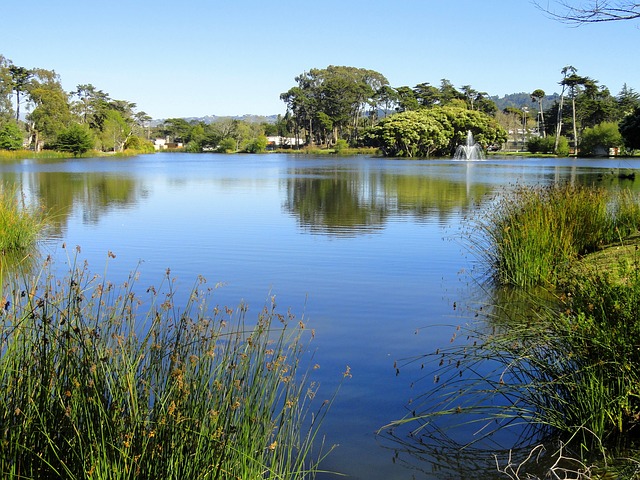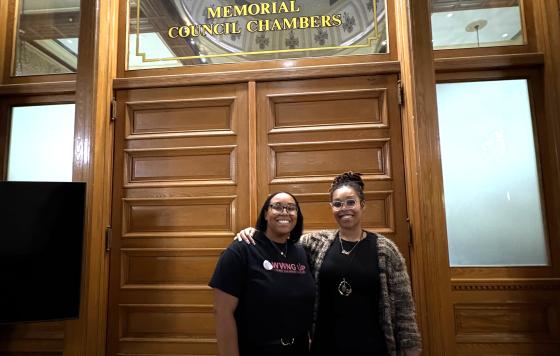
Overview of your organization’s involvement with sustainable groundwater management issues?
The Freshwater Trust is most well-known for its work on protecting freshwater river ecosystems. In California, a significant amount of surface water bodies are regulated and diverted through dams and other surface water infrastructure. Surface water bodies also lose flow when the groundwater is depleted. So for our efforts in California, we see as an important role for the Trust to use our understanding of surface waters and apply that to protecting their associated groundwater systems. California is catching up on groundwater protection and we are taking the lessons we have learned from other Western states and applying them to groundwater in California.
How does the Trust relate to the Sustainable Groundwater Management Act (SGMA)?
The Trust works differently than some NGOs—we are focused on quantitative environmental outcomes, and SGMA helps us do this by requiring the identification of the six undesirable effects of groundwater mis-management. Those six undesirable effects are really useful for applying our metrics-based focus. We initially identified the importance of SGMA to freshwater ecosystems in the Sacramento-San Joaquin Delta, so, we helped 19 Groundwater Sustainability Agencies (GSA’s) form out of special districts, and we partnered with stakeholders in the Solano and South American and the Eastern San Joaquin subbasins.
There are a lot of environmental concerns about maintaining fish and wildlife habitat in the Delta and the whole region is essentially in irrigated agriculture, so we saw that as an opportunity to work with growers and agricultural producers to see the benefits of SGMA. We then assisted several of those agencies to organize together for efficiencies of scale into one multi-basin Joint Powers Agency.
Tell me about a basin you are currently working in.
We were given the opportunity in that context to work with the Solano sub-basin supporting their Groundwater Sustainability Plan (GSP), and we are working with the Dixon Resource Conservation District, and a number of individual farmers to see what water efficiency improvements and practices (such as cover cropping and improved irrigation equipment) can be adopted. Simply slowing stormwater runoff using cover crops captures significant water and reduces erosion and sediment transport. We are also looking at managed aquifer recharge distributed over many farm fields as a GSP management action, using systems we call BasinScout and StreamBank. This analytical approach takes distributed stormwater, and in some cases taking additional surplus surface water in the winter, to accomplish groundwater recharge. However, with recharge projects there are a number of important fine details that are the difference between projects that are successful versus those that can cause environmental harm.
SGMA helps us understand the six undesirable effects on the sustainable use of groundwater, specifically protecting Groundwater Dependant Ecosystems (GDEs). We look at areas around riparian zones that have coarser soils and can support river recharge. If those shallow groundwater areas are depleted, the riparian vegetation can get cut off from groundwater. To help us better protect these ecosystems we are working with a team of hydrogeologists looking at the water table in the Cosumnes River watershed and assessing what specific actions are needed to protect GDEs under SGMA, and under various climate change scenarios. We are also looking at GDEs that are influenced by cones of depression (a circular pattern of water table drawdown in areas where groundwater has been depleted by wells.) Some of those cones of depression can happen over just a year in a drought, and some take decades to form, and decades to replenish.
We are also actively applying the SGMA planning process to identify potential solutions in the basins we work in and then working to make those solutions happen. For example, are working with local GSAs to assess the feasibility of using existing stormwater detention basins for recharge and environmental and community recreational benefits as well. We are also moving forward with more innovative approaches, such as using recycled wastewater to substitute for agricultural use of well water, in lieu of recharge.
SGMA also provides a means of accountability for groundwater use through the development of sustainable yields. But that accountability is actually limited since the sub-basins are massive, and the use of average conditions mean some areas are still significantly impacted. We know that groundwater water quality is not where we need it to be, and that water quality is impaired or at risk of impairment in portions of the Central Valley. We are using our analytical tools to support the involvement of disadvantaged communities and underserved communities in the GSPs, which is critical for the successful implementation of SGMA. Unfortunately the current SGMA process in many places doesn't lend itself to participation by people such as residential well users, the very people most impacted in rural communities.. So we are trying to find tools that show how understanding and supporting the shallow groundwater needs for people’s drinking water are also integral for freshwater ecosystems, and vice versa.
How do you think about the role of agriculture in groundwater management?
In the sub-basins we work in, agriculture is the predominant user of water. But they are also partners in the management and achievement of sustainability--the Trust is helping agriculture become more efficient and be creative in reducing undesirable effects. With the loss of agriculture, there are significant social and environmental consequences to letting land go fallow for extended periods of time.
There are some kinds of agriculture that have a real opportunity to make improvements in their use of groundwater. For example, there is the possibility for irrigated agriculture to improve yields and return on investment by changing groundwater use practices, but we have to show how that can be realized.
But these issues are complex, we are working with the conservation community to reframe the old image of agriculture as the enemy. For example, growing corn in some areas has lead to excess nitrogen in the groundwater, but corn can have significant wildlife benefits. So we need to reconsider how we use fertilizer, rather than saying we need to get rid of corn. Another example is alfalfa; even though it can use significant amounts of water, it can have very high wildlife use. The Trust uses its technology to focus solutions where the problems are worst and where conservation actions can have the \greatest benefit. Context matters.
The Trust works with many sectors within agriculture, such as cooperatives, and individual growers of various sizes. There is a lot of room for creativity across the agricultural landscape and so we haven’t targeted any one sector.
We have a positive and hopeful perspective on agriculture. Much of our conservation benefits have happened because of our partnerships with working lands. Our goal is to find the sweet spot where the agricultural community is getting clear value from the efficient use of water, and communities and the environment benefits from those actions. We think SGMA can be a powerful tool for getting to that common ground.
How do you see your role with respect to other stakeholders working on GSPs?
The Trust does not typically take adversarial positions; we feel that our role is most effective when we are a partner at the decision-making table. This is one of the reasons we as a small NGO work directly with so many GSAs. In addition to that collaboration, our technical capacity allows us to work directly on GSP’s. We identified early on in the SGMA implementation process that the greatest impact that we could bring to conservation was to work on GSPs to reflect conservation values.
The way we think about challenges is embedded in the idea that if SGMA is going to work it is going to take all of the stakeholders working with a shared understanding of where we are and where we are going with groundwater management. To inform that understanding we are constantly refining the tools that we use for that insight, BasinScout and StreamBank, to show where and how to achieve and maintain sustainability with the greatest conservation benefit, at the lowest cost. SGMA is foundational to protecting and restoring freshwater ecosystems in California’s highly modified hydrology. The Trust is committed to ensuring that sustainability for both people and the environment.


